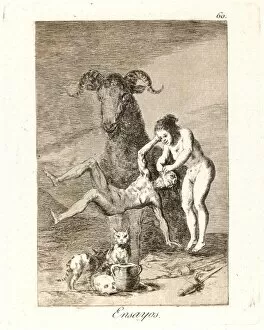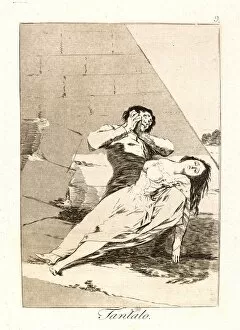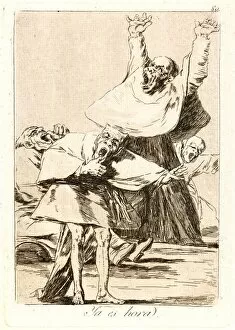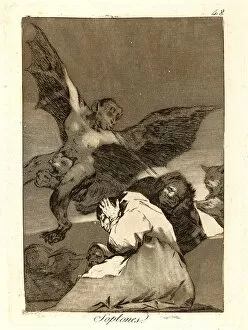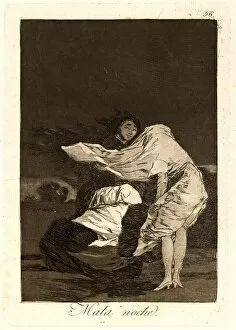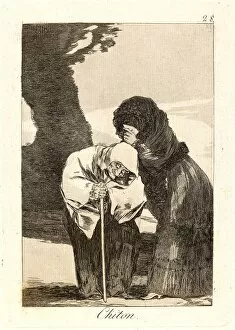In the years 1796-1797, the renowned Spanish artist Francisco de Goya created a series of captivating artworks that showcased his immense talent and unique perspective on society. One such piece is "Sopla" (Blow), which is part of his collection called Los Caprichos. This intriguing artwork depicts a scene where a young woman is blowing into the ear of another person, symbolizing manipulation or deceit. Another thought-provoking artwork from this period portrays a Prostitute Soliciting Fat Ugly Man recto Young Woman Wringing Hands Mans Naked Body verso. In this composition, Goya explores themes of desire, power dynamics, and vulnerability within human relationships. Goya's artistic prowess shines through in "Catching Fireflies Willow Tree, " where he skillfully captures the enchantment and beauty of nature. The delicate playfulness depicted in this painting transports viewers to a serene world filled with wonder and tranquility. "Mascaras crueles" (Cruel Masks) [recto] delves into the darker aspects of human nature as Goya presents an unsettling portrayal of masks worn by individuals to conceal their true selves. This thought-provoking artwork serves as a reminder that appearances can often be deceiving. In "Al Conde Palatino, " Goya pays homage to an influential figure while exploring themes related to social hierarchy and power structures prevalent during that era. The emotional depth portrayed in "Por que fue sensible" evokes empathy from viewers as they witness the pain experienced by its subject. Through masterful brushstrokes, Goya conveys raw emotions that resonate deeply with audiences even after centuries have passed. "Tal para qual" (Two of a kind) offers an insightful commentary on societal norms and expectations placed upon women during that time period. By juxtaposing two female figures engaged in conversation, Goya challenges traditional gender roles and highlights the importance of individuality.






